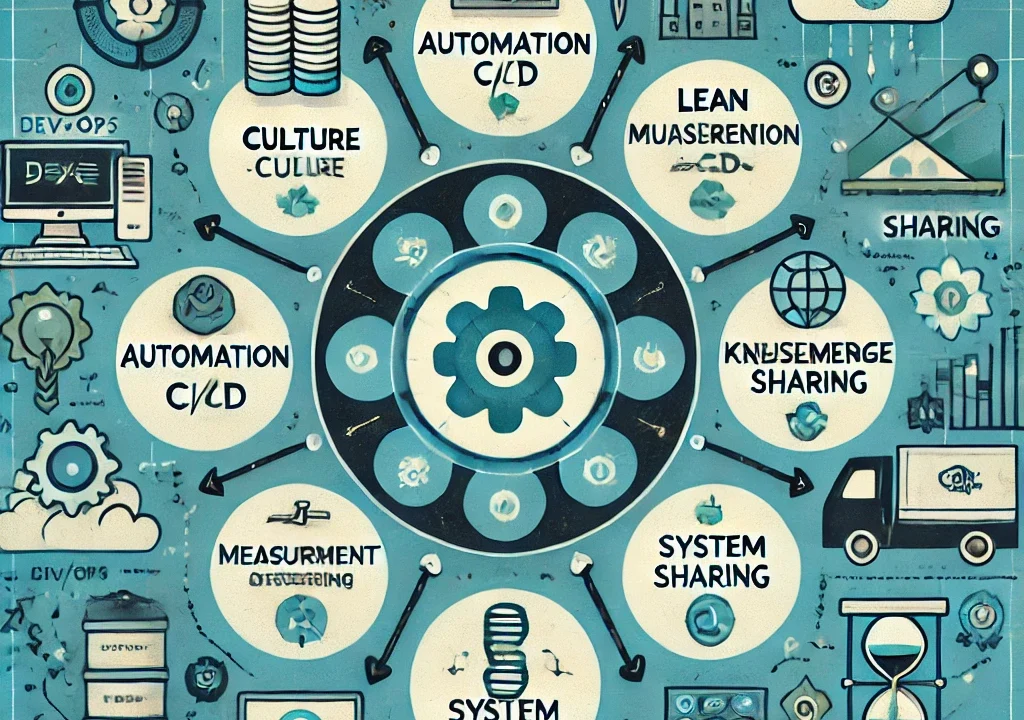What is One Element of the CALMSR Approach to DevOps?
Whereas, in the world of DevOps, success is often defined by the ability to deliver software quickly, reliably, and with minimal risk. One popular model used to guide DevOps practices is the CALMSR framework. This model is a holistic approach to DevOps that focuses on several key elements needed to ensure an effective and sustainable DevOps culture.
Therefore, the CALMSR approach is an extension of the original CALMS framework, which stands for Culture, Automation, Lean, Measurement, and Sharing. The “R” added to the acronym stands for Recovery. Together, these elements work to transform how an organization develops, deploys, and manages software.
In this article, we’ll explore one critical element of the CALMSR approach and how it plays a pivotal role in the success of DevOps practices.
What is the CALMSR Approach to DevOps?
On the other hand, the CALMSR approach represents five key pillars and one additional element that together create a culture of continuous improvement and agility within a DevOps environment:
- Culture: Focus on creating a collaborative, open, and supportive environment between development, operations, and other cross-functional teams.
- Automation: Automating repetitive tasks such as testing, integration, and deployment to increase efficiency and reduce human error.
- Lean: Implementing lean principles to eliminate waste and focus on delivering value to the customer.
- Measurement: Using metrics to track progress, assess performance, and guide decision-making.
- Sharing: Encouraging knowledge sharing and transparency across teams to foster continuous learning and improvement.
- Recovery (the “R” in CALMSR): Ensuring that systems are resilient and can recover quickly from failures, minimizing downtime and disruption.
One Element of the CALMSR Approach: Recovery
Let’s delve into one of the most crucial elements of the CALMSR approach—Recovery. In the context of DevOps, Recovery refers to an organization’s ability to handle failure and quickly recover from issues that may arise during the software development or deployment process.
What is Recovery in DevOps?
In traditional IT operations, failure is often seen as something to be avoided at all costs. However, in DevOps, failure is recognized as an inevitable part of the process. The key is not to eliminate failure altogether but to build systems and processes that allow you to quickly recover from those failures when they do happen.
The Recovery element of the CALMSR framework focuses on ensuring that systems are resilient and can handle failures with minimal impact. By enabling fast recovery, teams can minimize downtime, reduce risk, and maintain customer satisfaction.
Why is Recovery Important in DevOps?
Hence, in a fast-paced DevOps environment, changes are being deployed continuously, which naturally increases the risk of failure. However, if organizations are prepared for these failures and have systems in place to recover quickly, they can continue to operate effectively, even when things go wrong.
Here’s why Recovery is a key element in the CALMSR approach to DevOps:
- Minimizing Downtime: Recovery processes enable teams to quickly identify and resolve issues, ensuring that services remain available to users.
- Reducing Impact: A quick recovery minimizes the impact on customers and reduces the cost of failures, preventing significant financial or reputational damage.
- Continuous Improvement: The recovery process helps teams learn from their mistakes, identify root causes, and implement preventative measures to reduce the likelihood of similar issues in the future.
How to Implement Recovery in DevOps?
To implement Recovery effectively in a DevOps environment, you can focus on the following practices:
- Automated Rollbacks: When a deployment or change introduces an issue, automated rollbacks allow systems to revert to a previous stable state, ensuring minimal disruption.
- Continuous Monitoring: Monitoring tools like Prometheus, Grafana, and Nagios can detect issues early, allowing for rapid responses to problems.
- Resilience Engineering: Adopt practices like chaos engineering to intentionally introduce failures into your system to test its resilience and improve recovery procedures.
- Disaster Recovery Planning: Have well-documented disaster recovery plans in place to ensure a structured and efficient recovery process in the event of a major failure.
- Incident Response: Create an effective incident response plan that includes a clear process for managing and resolving incidents, with defined roles and responsibilities.
Other Key Elements of the CALMSR Approach
While, recovery is a crucial element in ensuring that systems remain resilient in a DevOps environment, other elements in the CALMSR framework are equally important for a holistic approach to DevOps:
- Culture: Fosters collaboration and open communication between teams, creating a DevOps-friendly environment.
- Automation: Helps streamline repetitive tasks, increasing efficiency and reducing human error.
- Lean: Focuses on minimizing waste in development processes to ensure that time and resources are spent on delivering value to the customer.
- Measurement: Provides metrics and data-driven insights that allow teams to track progress and make informed decisions.
- Sharing: Encourages transparency and knowledge sharing across teams, enabling continuous learning and improvement.
Conclusion: Is Recovery a Key Element in DevOps?
Yes, Recovery is a vital component of the CALMSR approach to DevOps. The ability to quickly recover from failures ensures that DevOps teams can maintain the flow of work and provide reliable services, even when things don’t go as planned. Emphasizing recovery within your DevOps strategy not only minimizes downtime and impact but also fosters a culture of resilience and continuous improvement.
In the end, DevOps is about more than just delivering software faster. It’s about creating a reliable, adaptable, and responsive system that can withstand and quickly recover from failures—helping organizations achieve greater business outcomes while reducing risk.


